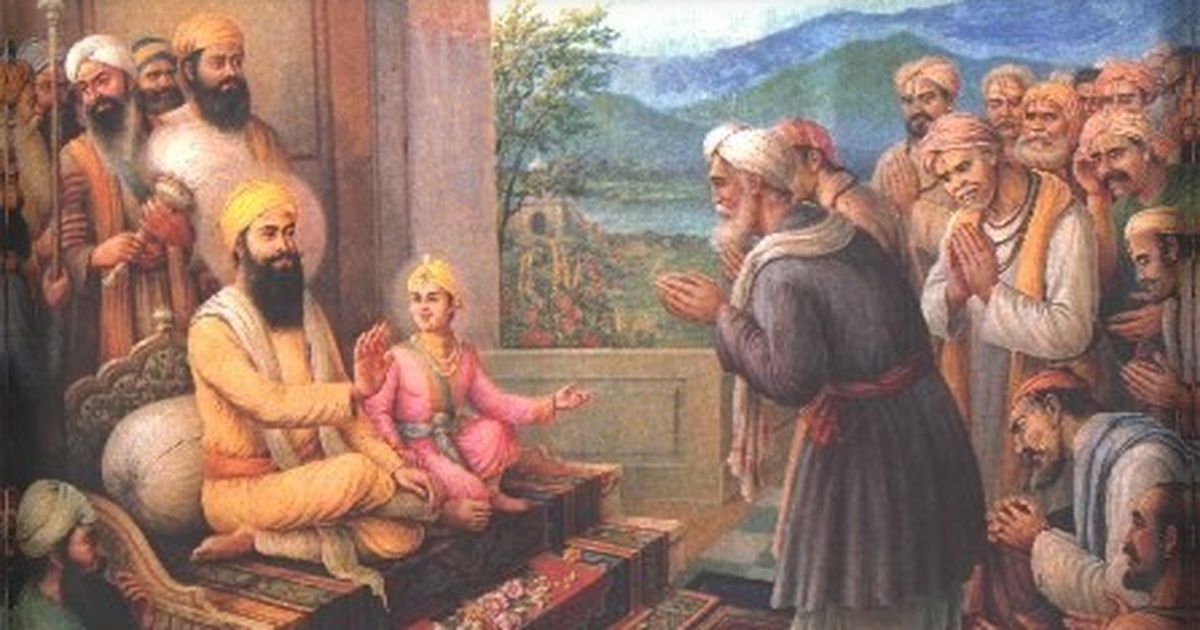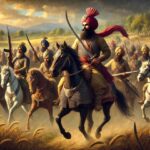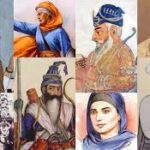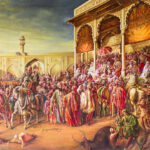How Did Mughals Kill Sikh Gurus
In a time of 240years, from Guru Nanak to Guru Gobind Singh ji (1469–1708) , out of ten Sikh Gurus just two met this destiny. To start with, Guru Arjan Dev ji in 1604 and Guru Teg Bahadur Sahib in 1675AD. From 1469 to 1604, there is a distinction of 125years. So during the first hundred a quarter century there was no question between the Mughol Rulers and Sikhism. Truth be told for killing of Guru Arjan Sahib just Jahangir was not mindful, the devotee Hindus in appearance of Diwan Chandu, Fanatic Muslims in the pretense of Sarhindi Mullahs and the senior sibling of Guru Arjan Dev, Prithi chand was similarly dependable. All the above contrived against Guru Arjan Dev and got a request from Jahangir to kill Guru Arjan Dev. Since it is the excecuter who is by and large accused so all the fault fell on the shoulders of Jahangir.
After this for a very long time, till 1675, the Mughol stayed indifferent with regards to the Sikhs. Master teg Bahadur himself offered himself for secrifice in light of the fact that Aurangzeb needed the Hindus to change over to Islam which was not acknowledged to the pacca Hindus. They moved toward Guru Teg Bahadur for the assurance of Hinduism. Master Teg Bahadur asked Aurangzeb to initially change him over to Islam. On the off chance that he succeed every one of the Hindus will accept Islam on the off chance that he was unable to change over him , he should quit changing the Hindus over to Islam. Master Teg Bahadur got his head hacked however didn’t change over to Islam. So the subsequent killing was a self secrifice not a constrained killing. So it isn’t right to fault the Mughol Rulers for this. The Mughols are deliberately accused by the cleverness Hindus to make a contrast between the Sikh and Muslims. Here they are fruitful and the Sikhs are in their lap.
Beginning from Jahangir, unadulterated desire and disdain inspired these Mughal King’s to attempt to kill Sikhs. Jahangir was irritated on the grounds that Guru Arjan Dev Ji Maharaj got Hindus and Muslims to become Sikhs. So he attempted to consume him on a hot plate.
Then, at that point after that Aurangzeb attempted to constrain convert Kashmiri Pandits to Islam. Master Tegh Bahadur Ji, the 10th Guru Sahib and the grandson of Guru Arjan Dev Ji mediated for their sake. He alongside Bhai Mati Das Ji, Bhai Sati Das Ji and Bhai Dayala Ji went to Delhi and were executed by Aurangzeb.
Two out of the ten Gurus were martyred by the Mughal domain, in particular the Fifth Guru Arjan and the Ninth Guru Tegh Bahadur on the sets of Jahangir and Aurangzeb individually.
A few of the previous Gurus kept up with warm relations with the sovereigns. Those heads were for the most part more open minded toward different religions, for example Akbar, and it is accounted for that they even looked for the favors of the Gurus at a few occurrences. Babur during the occasions Guru Nanak, Humayun of Guru Angad (Khadur Sahib, 1540) and Akbar of Guru Amar Das (Goindwal, 1569). The Guru’s frequently contemplated at the command of the more unfortunate segment of the social orders with these rulers. Sovereign Akbar dispatched the duties to be paid by ranchers somewhat on Guru Arjan’s demand (affirmed by Persian and Sikh sources).
To keep it short religious fanaticism (I), legislative issues (II), desire/unfriendly groups (III) & Sikh esteems (IV) were the elements prompting the Guru’s execution.
(I) Religious fanaticism. The developing number of converts when of Guru Arjan didn’t go down well for certain fanatic Muslims and Hindus as the greater part of changes came from those two religions. Jahangir concedes in his auto-account that this was [one of the main] reason(s) of Guru Arjan’s execution. “Hence, numerous honest Hindus and surprisingly absurd and uninformed Muslims were brought into his crease. … For quite a while I have held onto the wish that I should save this shop of deception or I that ought to carry him into the overlay of Islam.” Shaikh Ahmed Sirhindi was an Islamic minister who was influental during Jahangir’s time and communicated outrageous fulfillment at ‘kafir’ Guru Arjan’s execution in his works.
The way that Aurangzeb made an honest effort to spread Islam forcibly doesn’t require further elaboration.
(II) Politics. The Guru’s home was available to all individuals in trouble. A few escapees and renegades shared food in the Guru’s langar (free kitchen) and expedited in the dharamshalas. One of them was outlaw ruler Khusrau. This was likewise blamed so as to outline Guru Arjan. Comparable charges were advanced by the Persian students of history in regards to Guru Tegh Bahadur; that he used to wander around with troopers intending to cause an insubordination, etc. These recorded accounts are loaded up with blunders. Sikh custom (Bachitar Natak, Rahitnama Chaupa Singh, … from the eighteenth century) shows Guru Tegh Bahadur forfeiting his life to shield the Kashmiri Brahmins from strictly spurred state persecution.
(III) Jealousy/unfriendly sects. The factions that needed to sabotage the Sikh development (for example Prithi Chandiyas, Ram Raiyas, Dhir Malias, … ) worked hand in glove with the specialists and were generous compensated for this (land to set up Dehra Dun, etc). They regularly impelled the specialists with bogus grievances (antiquarian Butay Shah faults Ram Rai unequivocally for the execution of Guru Tegh Bahadur – not upheld by every authentic source however).
(IV) Sikh values. The Gurus might have cut short their executions at any example by either paying a fine, changing over to Islam or performing wonders. Yet, the Gurus remained by their qualities, for example, boldness which are revered in the Guru Granth Sahib.








